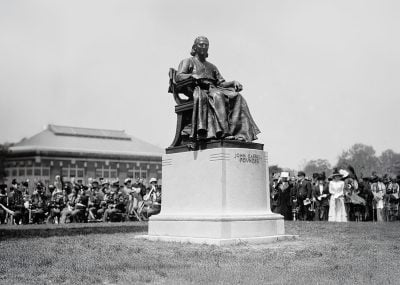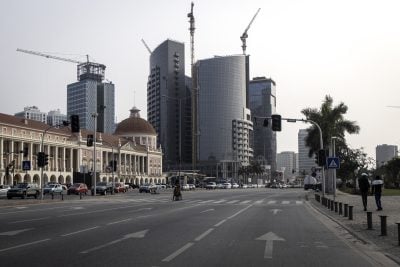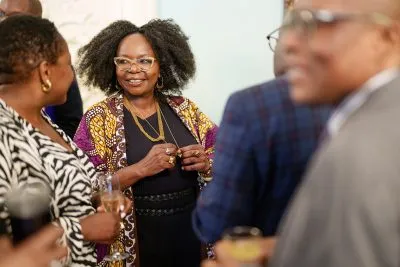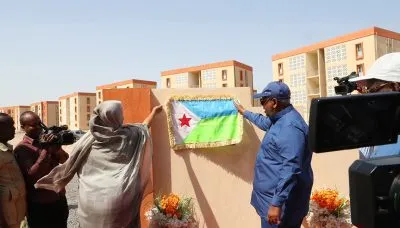A three-carat rough diamond, no larger than a coin, was unearthed in a giant pit of pale dust in eastern Botswana by Debswana, a company owned jointly by diamond giant De Beers and the Botswana government. The stone, formed more than a billion years ago, hundreds of kilometres below the Earth’s surface, would later form the centrepiece of the ring that British royal Prince Harry gave to American actress Meghan Markle upon their engagement in 2018.
Botswana’s four diamond mines harbour some of the richest diamond deposits in the world. Finds such as the cushion-cut stone that adorns the royal engagement ring have transformed Botswana from a cattle-rearing economy into one of Africa’s wealthiest countries, with the fifth highest per capita income on the continent according to the IMF.
However, the future of the diamond industry, which accounts for a fifth of Botswana’s GDP, is currently the focus of intense discussions. Negotiations between De Beers and the government are taking place to hammer out a new contract for the sorting, valuing and sales of diamonds from mines run by Debswana.
De Beers and Botswana’s deeply entwined and mutually enriching history is rooted in Debswana. The diamond company and the government of Botswana each hold a 50% stake in the joint venture, which was founded in 1969. The government also holds a 15% stake in De Beers, with the rest owned by mining group Anglo American.
Polishing Botswana’s sparkle
The last contract between De Beers and Botswana’s government commenced in January 2011. It saw De Beers agree to move the company’s global sightholder sales operations – through which it sells 90% of its rough diamonds by value – from London to Gaborone by the end of 2013. Eighty-five of the 300 London-based De Beers staff relocated in a move costing some $120m.
De Beers also agreed to move some of its beneficiation operations – the process of transforming raw diamonds pulled from the ground into finished products – to the Botswana capital.
The agreement marked the creation of an independent company, wholly owned by the Botswana government, called the Okavango Diamond Company, which has the right to sell 15% of gems extracted locally. De Beers commenced its Botswana diamond sales in November 2013 in the state-of-the-art Diamond Trading Centre, a rough diamond sorting and valuing operation which has the capacity to sort 45m carats a year, and where 50% of employees in the sales division were newly recruited locals. The company also recruited local account managers, HR and finance workers, says David Johnson, head of strategic communications at the De Beers Group of Companies.
“[Moving the sales operations to Botswana] didn’t create many direct jobs, but it meant that we were undertaking our aggregation processes in country,” Johnson told African Business, referring to the process of sorting and blending stones from different mines on the continent.
De Beers’ leading diamond customers, known as sightholders, represent 85 of the world’s leading cutting and polishing trading businesses, and now buy around $6bn worth of stones in Gaborone, says Johnson.
“They would then obviously support growth and development in Botswana’s service sector through hotels, limousines, and a lot of ancillary services,” he explains.
According to an economic impact report compiled by De Beers two years after the relocation, the value of rough diamonds traded in-country soared from under $1bn annually to more than $6bn in 2014, which translated into taxes and royalties for the country. De Beers also generated $380m in revenues for Botswana from the sale of rough diamonds to international manufacturers, the report says.
Supplier and employee expenditure by De Beers added $30m to GDP, roughly 2.5% of Botswana’s GDP, making the partnership the largest single contributor to the Botswana economy, besides the government itself, says the report.
Between a rock and a hard place
According to the report, in 2014 the Debswana partnership supported more than 34,000 jobs in the country. Some 8,000 people were directly employed by the partnership, of whom 96% were Botswana citizens; 12,870 people were employed by suppliers; and 13,400 jobs were supported by the spending of direct employees and those of the suppliers.
But since then the number of jobs has declined due to a combination of automation eroding mining jobs, limited activity among local sightholders, and the inability of Botswana to compete on price and expertise with other diamond processing centres such as Tel Aviv and Antwerp, according to Christopher Vandome, a research associate at Chatham House’s Africa Programme.
These were not the only problems created as a result of the relocation. De Beers had to overcome other problems as a result of the relocation, says Vandome. “When the move was made there were real issues right from the start around electricity generation and power. It was the case at the time that they needed to bring in extra generating power from over the border in South Africa in order to just hit the deadline for the opening day,” he explains.
High stakes
The current negotiations are set against a backdrop of weakening global diamond demand, which may allow De Beers to demand more lenient terms. Macroeconomic uncertainty is dragging on consumer spending in the US and China, while cheaper lab-grown rocks are taking market share. De Beers cut its diamond prices by around 5% at its November sale, according to Bloomberg, in a bid to improve profits for struggling traders and polishers that buy rough stones from the company. The open market price for rough diamonds fell by about 9% in the year to November 2019.
The company’s position is also strengthened by the importance of the De Beers partnership to the Botswana government. It remains the country’s biggest employer outside the government and the largest source of state revenues, which weakens the government’s position in negotiations. Nevertheless, they became a political issue on the campaign trail in October when opposition leader Duma Boko vowed to take a tough stance and ensure “much fairer and more equitable” terms from the company. Other candidates criticised the relationship in a televised election debate, but President Mokgweetsi Masisi, who emerged victorious in the poll, said he was looking for a “win-win” from a “wonderful relationship with De Beers”.
Despite the significant economic contributions reaped from the relocation of De Beers sales to Gaborone, diamond industry analyst Edahn Golan says this time round the government will push for more benefits from diamonds, be it royalties, or an expansion of activities. “What can they get that is as large [as the relocation] this time?” he asks.
Changes needed
Gobusamang Keebine, president of the country’s largest private sector lobby group, Business Botswana, says he hopes the latest talks will bring “tangible changes” to the relationship between the government and De Beers.
“At the time everybody thought [the 2011 deal] would really turn Botswana and Gaborone into a diamond city like Antwerp, but that did not happen. We haven’t seen much in terms of local entrepreneurs being involved in the diamond industry. For most Batswana it really was just the same as it has been for the last 20 or 30 years,” he says.
Keebine believes that much more can be done to create opportunities for local companies and entrepreneurs to act as sightholders for De Beers: “We the private sector would like to see more involvement of local companies in the downstream, because if you look at the sightholders which are located in Botswana, and if you see who they are, you find out the involvement of Botswana entrepreneurs in those organisations is almost zero percent.”
Another way to make the diamond industry work better for the economy would be for Botswana’s state-owned Okovango Diamond Company to expand along the value chain, says Keebine.
“The Botswana government is being cheated on the pricing based on value in Botswana, and value when the diamonds reach offshore. If the entire value chain remains in the control of the Botswana government the realisation on the sale of the diamonds will be much higher.”
De Beers has a confidentiality agreement with the government of Botswana, whereby it won’t talk publicly about the content of the ongoing negotiations. Yet the negotiations remain crucial to the company, as it extracts some two-thirds of its diamonds from the country. Industry analyst Edahn Golan believes the deal is essential for De Beers, which he predicts will seek the certainty of a “long-term” five to ten year deal. De Beers’ Jwaneng Mine in south-central Botswana is the company’s largest, and the world’s richest diamond mine by value.
“Its extremely important. Diamonds for the government of Botswana are the largest source of income for the state and for the country, and for De Beers it is one of the most important locations in terms of resource. It has mining in other countries but Botswana is by far the most important one in terms of value, in terms of volume, in terms of activity,” Golan says.
On the government side, talks with De Beers are usually led by Botswana’s permanent secretary for the ministry of minerals Dr Obolokile Obakeng, who alternates as the chairperson of Debswana. He is joined on the negotiating team by the acting permanent secretary to the president, Elias Magosi, and the governor of the Bank of Botswana, Moses Dinekere Pelaelo. On the De Beers side, a team composed of senior leadership is led by CEO Bruce Cleaver, according to Johnson.
The current 10-year deal expires at the end of 2020. In September, President Masisi told Bloomberg TV that a new deal should be concluded after the election in October.
“The discussions are ongoing but I haven’t got anything to suggest to me they will be imminently concluded,” says Johnson.
Want to continue reading? Subscribe today.
You've read all your free articles for this month! Subscribe now to enjoy full access to our content.
Digital Monthly
£8.00 / month
Receive full unlimited access to our articles, opinions, podcasts and more.
Digital Yearly
£70.00 / year
Our best value offer - save £26 and gain access to all of our digital content for an entire year!
 Sign in with Google
Sign in with Google 



